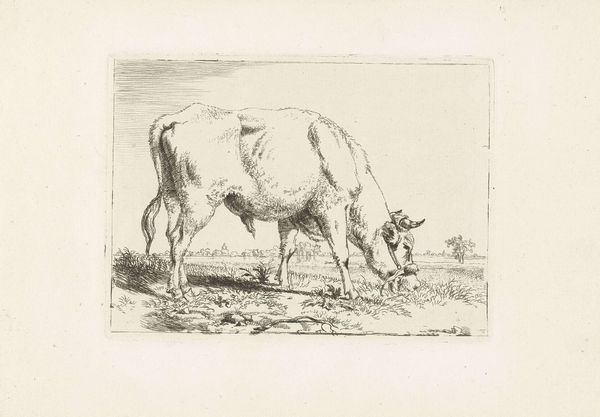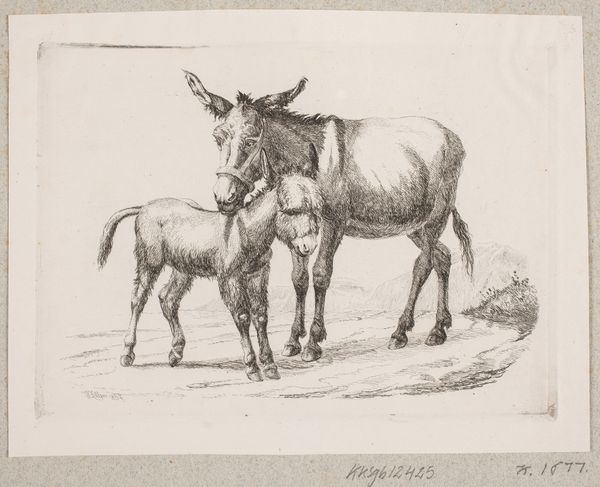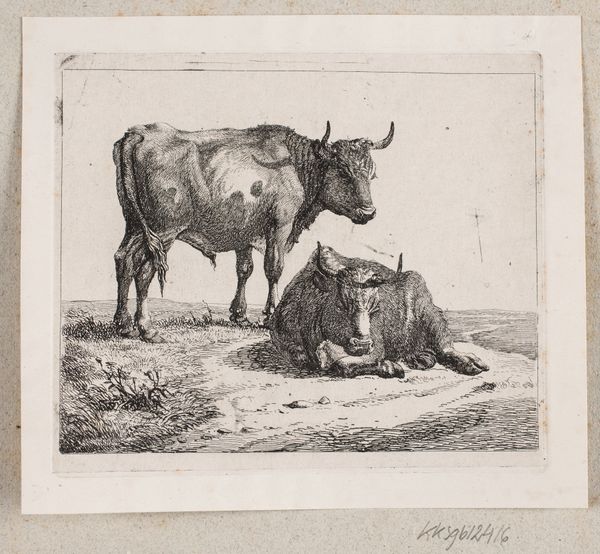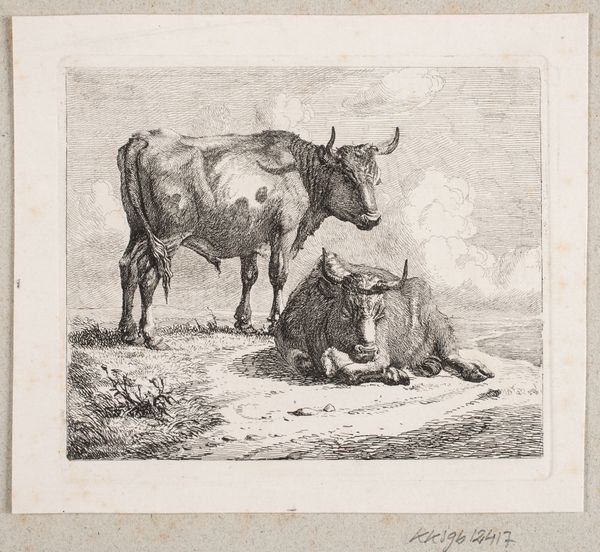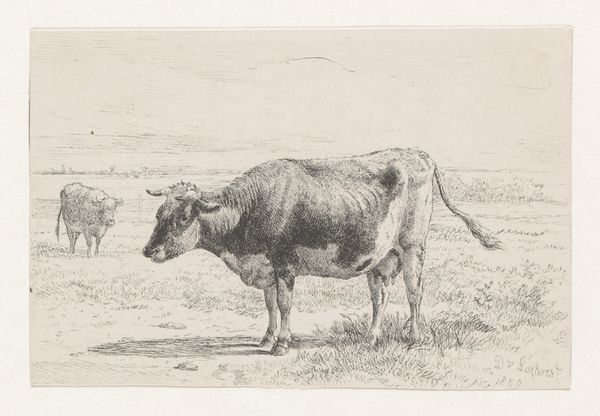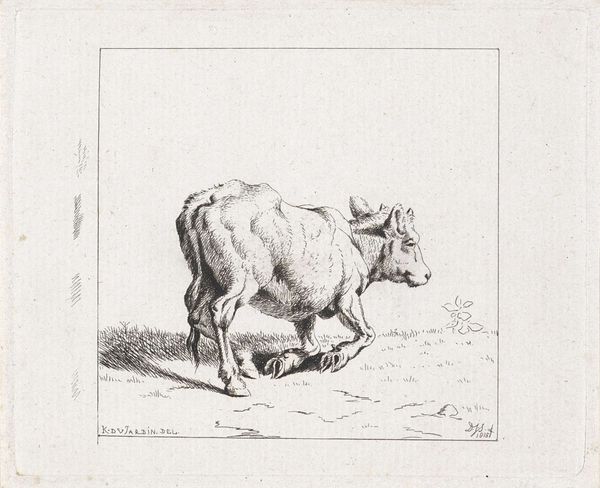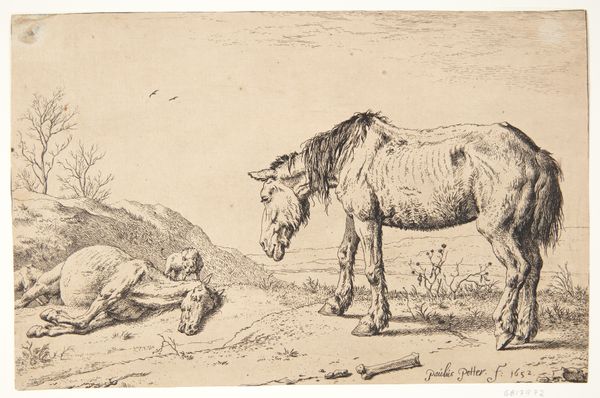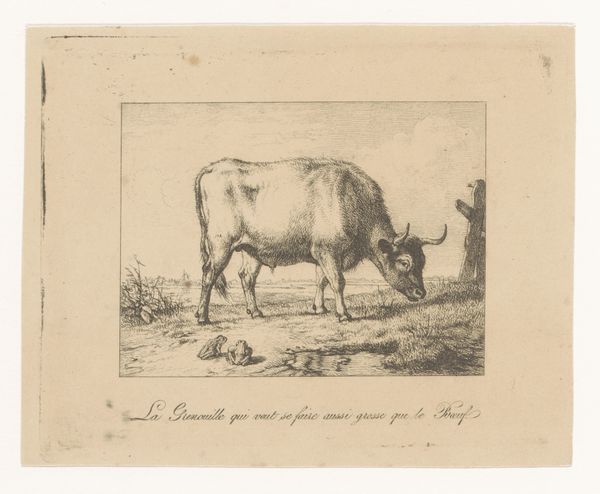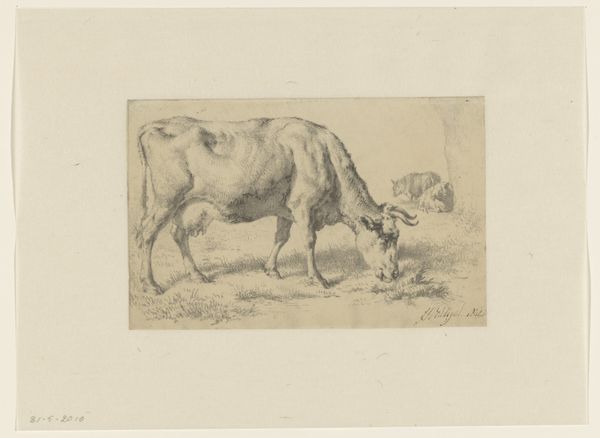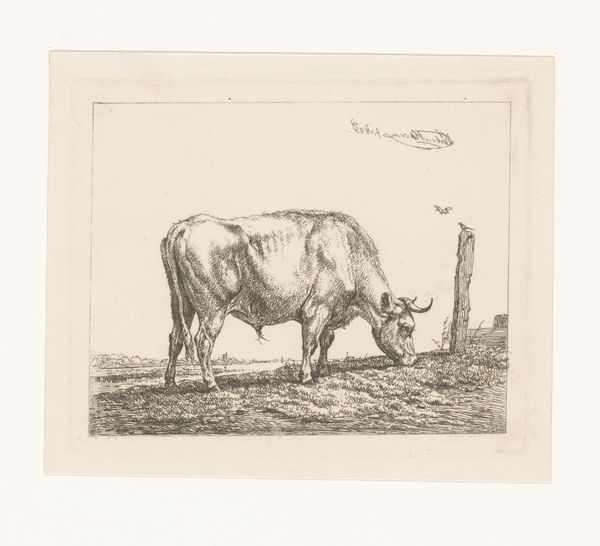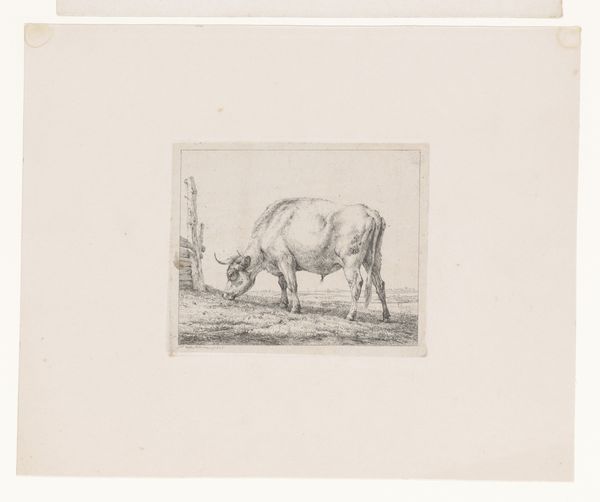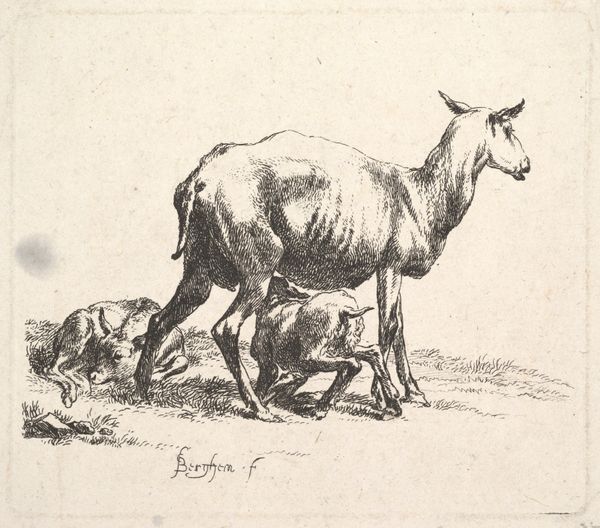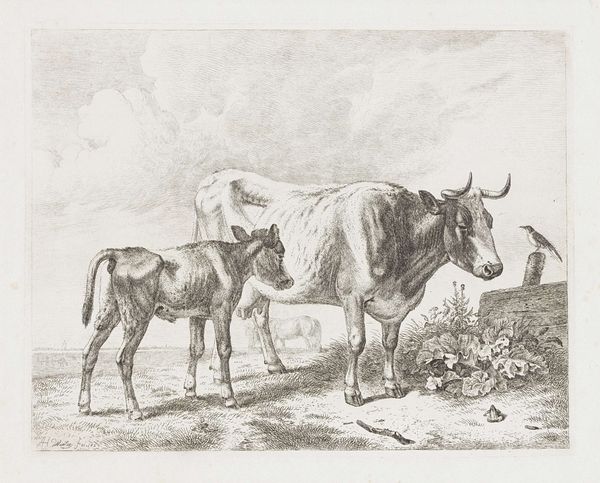
drawing, etching
#
drawing
#
etching
#
landscape
#
figuration
#
romanticism
#
genre-painting
#
realism
Dimensions: height 123 mm, width 138 mm
Copyright: Rijks Museum: Open Domain
Editor: Here we have Eugène Verboeckhoven's "Stier en liggende koe," an etching created sometime between 1808 and 1881. It's a fairly simple composition of two cows in a field, but I find something peaceful and almost monumental about the bull's stance. What do you see in this piece, particularly given the period it was made? Curator: What I see is a representation of the romanticized view of agrarian life popular during the rise of industrialization. Verboeckhoven’s detailed rendering of these animals almost elevates them. Consider the socio-political context. As cities grew and labor became increasingly alienated, idyllic pastoral scenes became a powerful symbol of a lost connection to nature, a sort of visual pushback against the changing social landscape. Do you see any element of realism versus idealization here? Editor: I see what you mean. While the detail is realistic, there’s a certain idealized stillness. They’re not working; they're just existing peacefully. It's interesting how this 'realism' is itself a constructed viewpoint. Curator: Exactly. Think about who this imagery served. Often, these depictions reinforced class structures, portraying a serene rural life that masked the realities of labor and land ownership. Furthermore, depictions like these often omit any presence of farm workers themselves, effectively erasing them from the narrative. Do you think this image contributes to such narratives? Editor: I suppose it does. It lacks the human element entirely, presenting the animals in isolation. That adds a layer to its romantic, but potentially problematic, viewpoint. Curator: Precisely. By examining art within these power dynamics, we reveal its ability to both reflect and shape cultural ideologies. This exploration really enriches our understanding of Romanticism and Realism, beyond simple stylistic labels. Editor: I'll definitely look at pastoral art with a more critical eye going forward! Thanks!
Comments
No comments
Be the first to comment and join the conversation on the ultimate creative platform.
